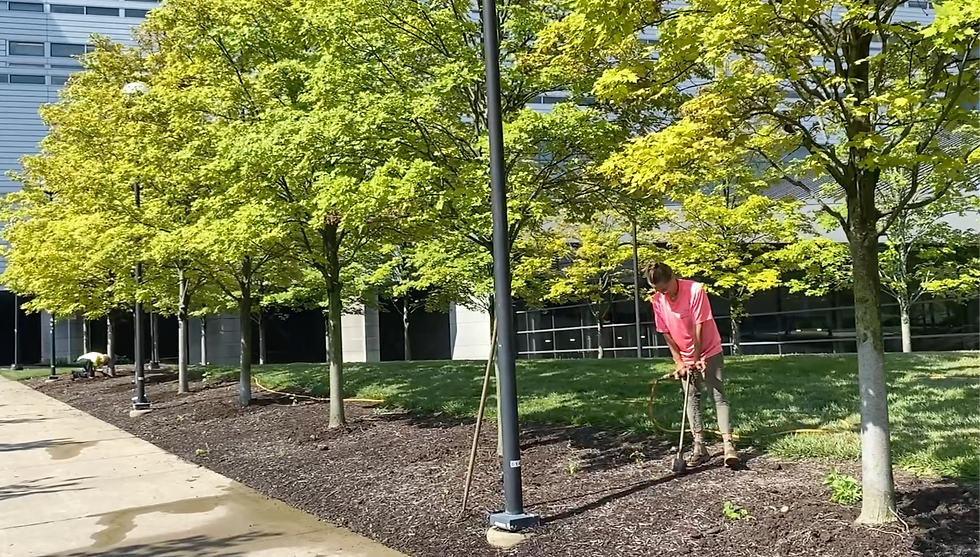Saving Trees at The University of Cincinnati
- Jordan Haas
- Jul 18
- 2 min read
Treating Manganese Deficiency in Maple Trees
Manganese is a vital micronutrient for the healthy growth and development of maple trees. A deficiency can lead to various growth issues, including chlorosis and poor leaf development. A deficiency can also make a tree more vulnerable to insects and diseases. Pests can be attracted to a stressed tree. Diseases can take advantage of a stressed tree. The deficiency can be the start of many issues. Here are some effective approaches to treating manganese deficiency in maple trees:

Identifying Manganese Deficiency
Before treatment, it's essential to identify the signs of manganese deficiency. Common symptoms include:
Interveinal chlorosis (yellowing between the leaf veins)
Small, pale leaves
Stunted growth
Brown spots on leaves

Begin Treatment
Once a deficiency is confirmed, we apply our treatments to the soil:
We improve the soil through our liquid root feeding with pH reducer and iron.
We condition the soil with our nutrient root hydration treatment which begins the process to permanently improving the soil.
We also will perform corrective pruning to improve nutrient allocation
Improving Soil Conditions
Manganese availability is influenced by soil pH and moisture levels. To enhance manganese uptake:
Maintain slightly acidic soil (pH 5.5 to 6.5) for optimal nutrient absorption.
Ensure adequate drainage to prevent waterlogging, which can hinder manganese uptake.

Monitoring Tree Health
After treatment, we will monitor the health of the maple trees for signs of recovery:
Observe new leaf growth for improved color and size.
Regularly check for other nutrient deficiencies or environmental stressors.

Conclusion
The University of Cincinnati is very proactive in addressing the manganese deficiency in their maple trees. We will continue applying appropriate treatments, and improving soil conditions. With regular monitoring we will help ensure these trees regain their health and vitality. We should see a complete turn around in overall tree health within 2-3 years.























